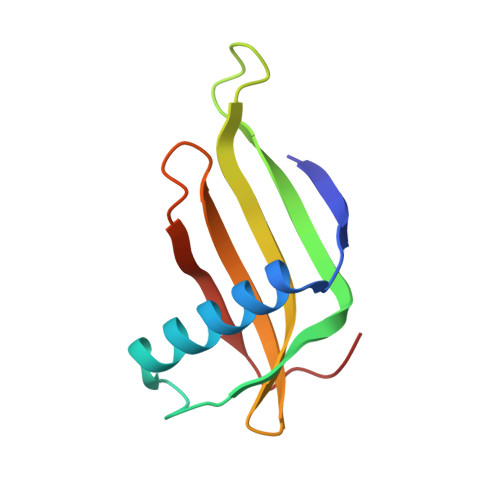Structural insights and aggregation propensity of a super-stable monellin mutant: A new potential building block for protein-based nanostructured materials.
Lucignano, R., Spadaccini, R., Merlino, A., Ami, D., Natalello, A., Ferraro, G., Picone, D.(2024) Int J Biol Macromol 254: 127775-127775
- PubMed: 38287601
- DOI: https://doi.org/10.1016/j.ijbiomac.2023.127775
- Primary Citation of Related Structures:
8Q0R, 8Q0S - PubMed Abstract:
Protein fibrillation is commonly associated with pathologic amyloidosis. However, under appropriate conditions several proteins form fibrillar structures in vitro that can be used for biotechnological applications. MNEI and its variants, firstly designed as single chain derivatives of the sweet protein monellin, are also useful models for protein fibrillary aggregation studies. In this work, we have drawn attention to a protein dubbed Mut9, already characterized as a "super stable" MNEI variant. Comparative analysis of the respective X-ray structures revealed how the substitutions present in Mut9 eliminate several unfavorable interactions and stabilize the global structure. Molecular dynamic predictions confirmed the presence of a hydrogen-bonds network in Mut9 which increases its stability, especially at neutral pH. Thioflavin-T (ThT) binding assays and Fourier transform infrared (FTIR) spectroscopy indicated that the aggregation process occurs both at acidic and neutral pH, with and without addition of NaCl, even if with a different kinetics. Accordingly, Transmission Electron Microscopy (TEM) showed a fibrillar organization of the aggregates in all the tested conditions, albeit with some differences in the quantity and in the morphology of the fibrils. Our data underline the great potential of Mut9, which combines great stability in solution with the versatile conversion into nanostructured biomaterials.
- Department of Chemical Sciences, University of Naples Federico II, Complesso Universitario di Monte Sant'Angelo, Via Cintia, 80126 Naples, Italy.
Organizational Affiliation:


















